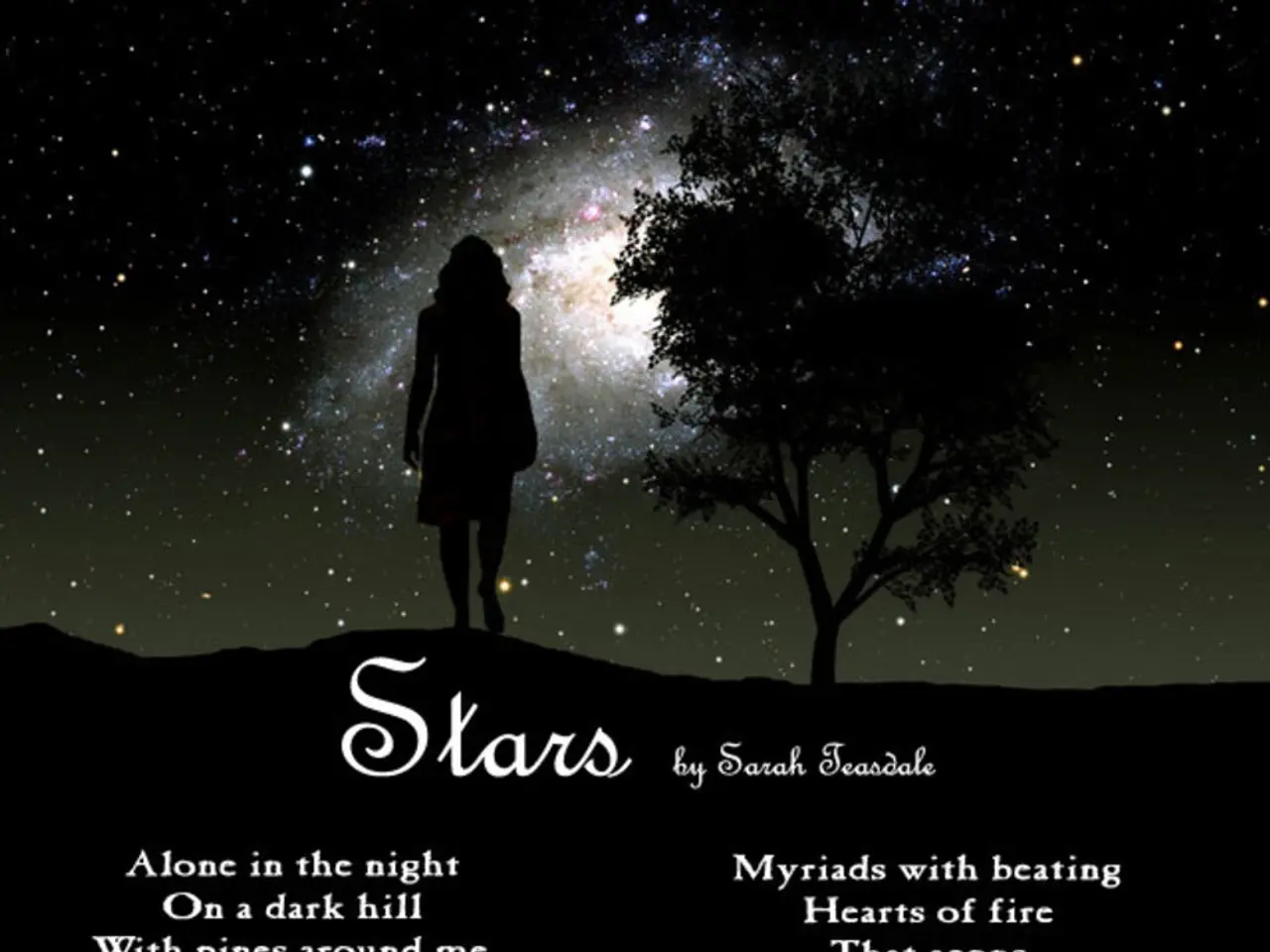Radiate brightness amidst the night's darkness, akin to twinkling stars
In the dark night of history, the symbol of the star has shone brightly, illuminating the cosmos and our human existence. From ancient civilizations to modern times, stars have held profound historical and symbolic significance, influencing spirituality, art, and cultural identity.
For Vincent van Gogh, the star was a source of hope and comfort, as evident in his journal and artworks. His famous work, "Starry Night," painted during a dark phase of his life while in a mental asylum, showcases his fascination with the celestial bodies. The less famous "Starry Night on the Rhone," painted the previous year, also reflects his deep connection with the stars.
In many ancient cultures, stars symbolized cosmic order, divine presence, or celestial power. The star and crescent symbol, featuring prominently in ancient Greek and Roman amulets and coins, represented the union of day and night or dual divine forces. Similarly, the Pentagram, a five-pointed star, dates back to at least 3100 BCE in Mesopotamia, symbolizing the five known astrological planets and mathematical harmony.
Star polygons, stars formed by connecting vertices of regular polygons, appear as symbolic motifs in art, heraldry, architecture, and religion. In European heraldry, a five-pointed star, called a mullet, traditionally marks knightly rank or denotes cadency for third sons. Stars also appear in Christian iconography, associated with saints.
Certain star clusters, such as the Pleiades, have held particular cultural and spiritual importance. Recognized since antiquity, the Pleiades have served practical roles in navigation and agriculture, signaling seasons. Indigenous cultures around the world honor the Pleiades in seasonal ceremonies, emphasizing their spiritual and societal influence.
In atheistic contexts or secular symbolism, stars often denote ideals such as aspiration, guidance, or universal values without invoking deities. They resonate as powerful icons in national flags, political emblems, and artistic motifs.
Paul, in his letter to the Philippians, encouraged them to "shine like stars" in a world of darkness, a call made against a backdrop of a "warped and crooked generation." This call was not in the context of the Christmas season but rather in a pagan culture. The light we see from a star is not its current position but rather where it was when the light rays left on their journey to us.
As children, we sang the nursery rhyme, 'twinkle, twinkle, little star.' The star followed by the Wise Men to Bethlehem is a common theme in school plays during this season. Stars have inspired wonder and hope throughout history, with many ancient cultures believing that their fate was determined by the stars. However, there is no scientific basis for finding hope in stars.
This exploration of stars and their symbolism was first published on Jeff Fountain's blog, Weekly Word, under the title, "Window on Europe - In the dark night, shine like stars." The article also highlighted the tragic 1035 days of war in Ukraine, reminding us that even in the darkest of times, we are called to shine like stars.
[1] Kessler, E. (2017). Crescent and Star: A History of the Muslim Icon. University of California Press. [2] Swift, J. (2012). Heraldry: A Very Short Introduction. Oxford University Press. [3] Lawlor, R. (2008). Sacred Geometry: Philosophy and Practice. Inner Traditions. [4] Hamayon, R. (2008). The Pleiades: Ancient and Modern Significance of a Celestial Pattern. Inner Traditions.
In the realm of human existence and cultural identity, the symbolism of stars extends beyond celestial bodies to lifestyle and home-and-garden motifs, as seen in European heraldry where stars (mullets) are used to mark knightly rank or denote cadency for third sons.
In secular or atheistic contexts, stars often symbolize universal values, ideals such as aspiration and guidance, serving as powerful icons in national flags, political emblems, and artistic motifs, just like the star in the window on Europe.



